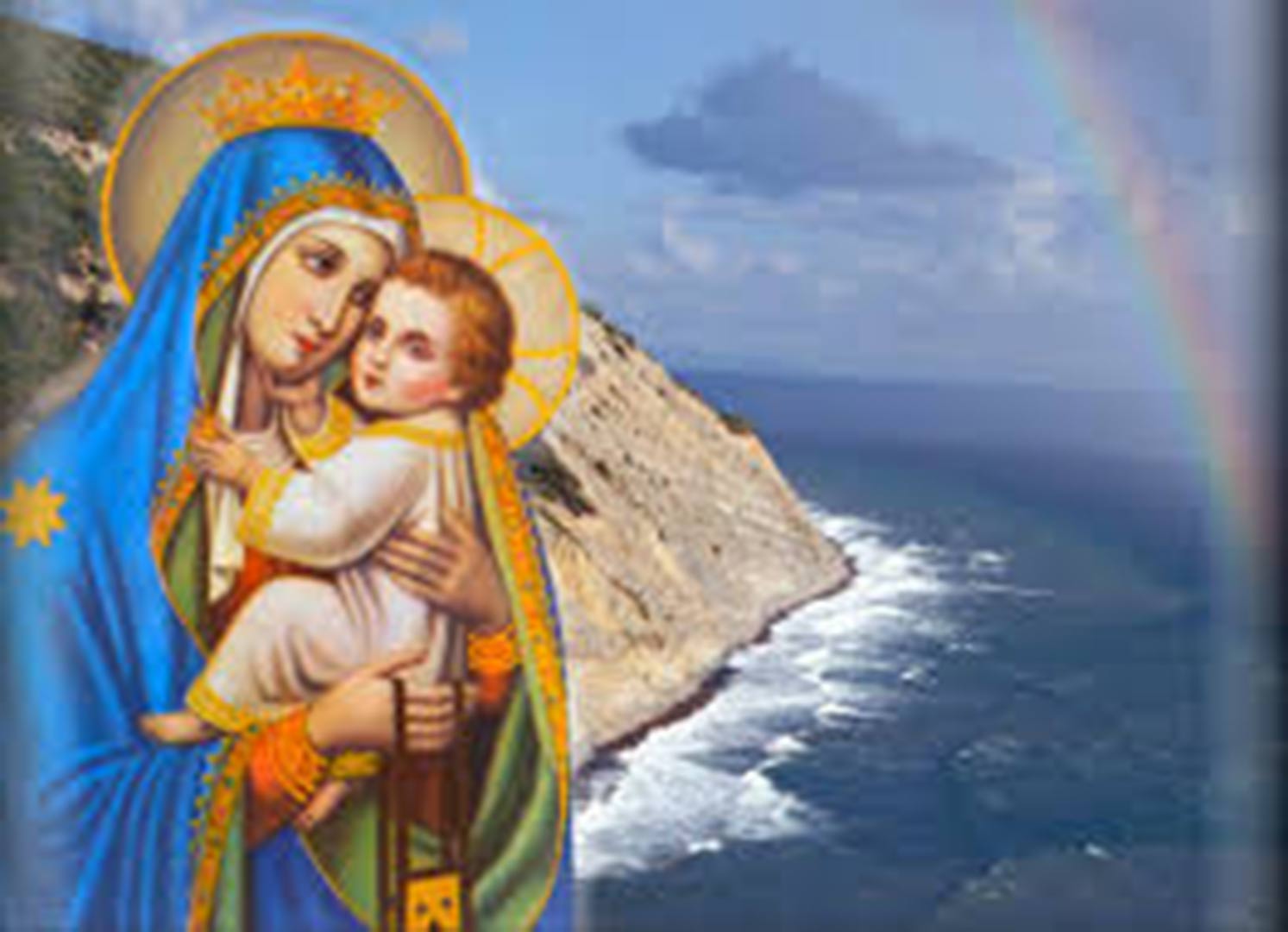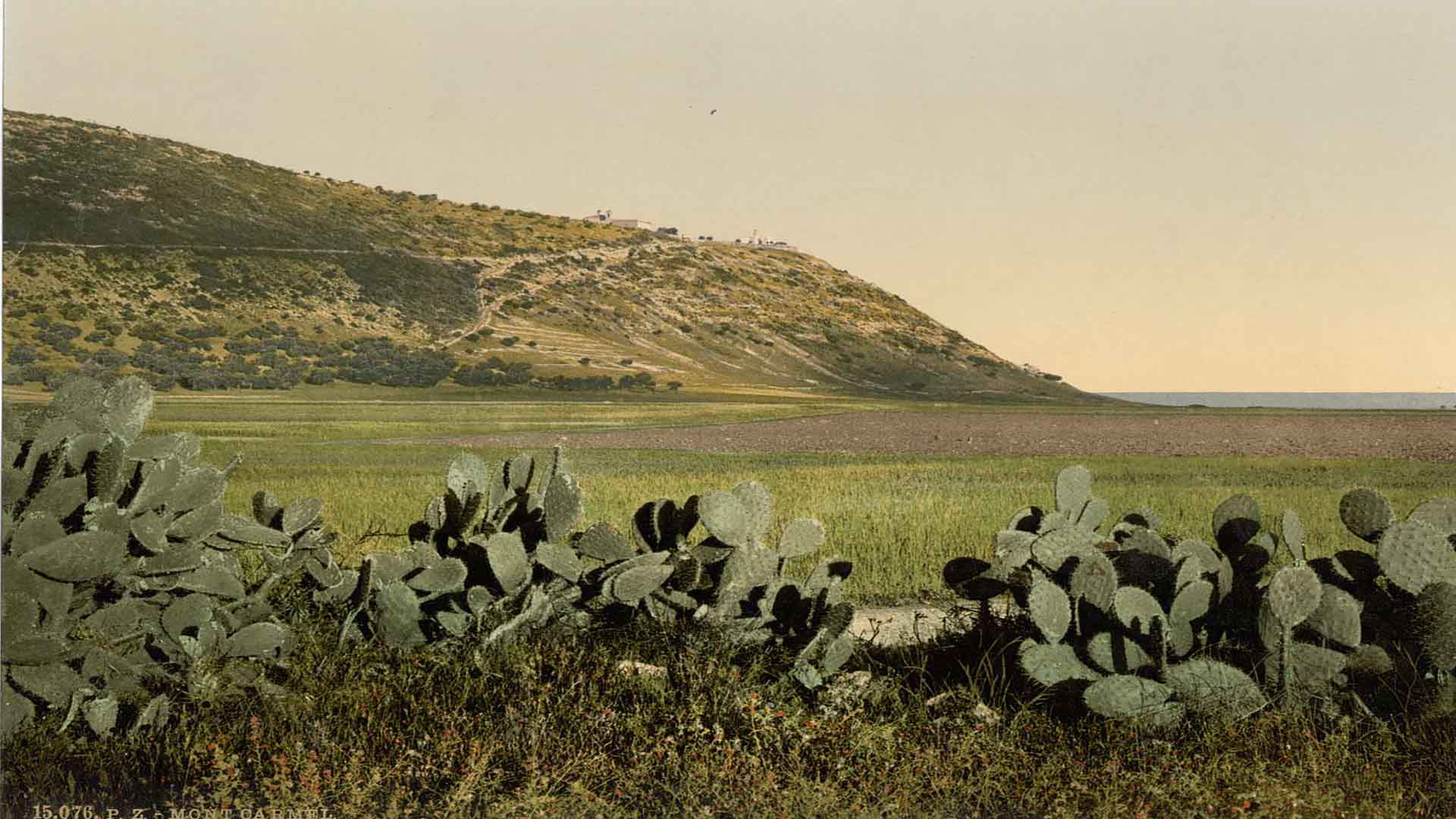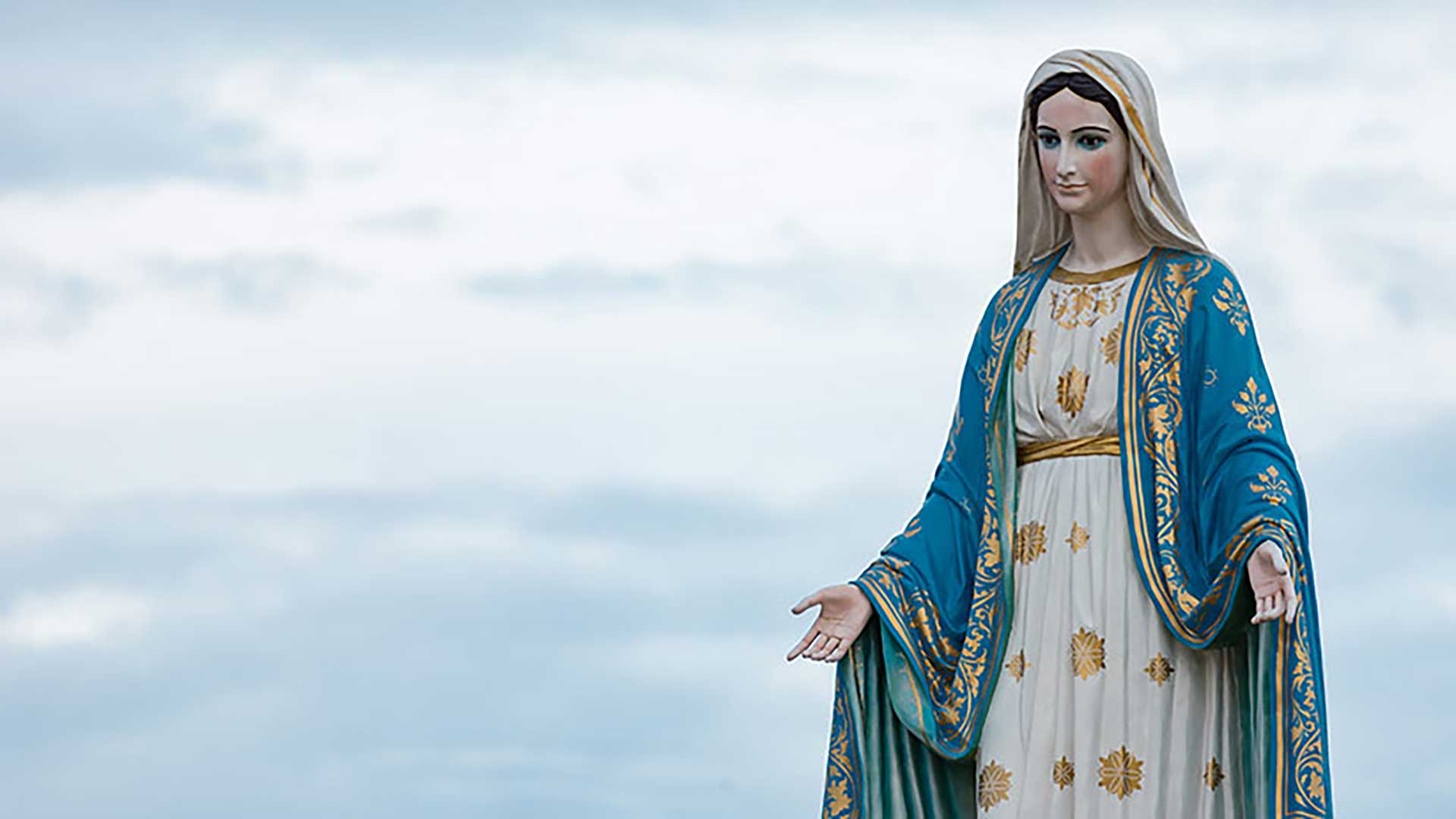Vaz, Montfort and their self-consecrations
Marian dedication stands enriched by the singular contributions made by Joseph Vaz (Goa, 1651 – Sri Lanka, 1711) and Louis de Montfort (France, 1673 – France, 1716).
Vazian Formula
Joseph Vaz expressed his profound love and tender care to the sublime Queen of the Universe and Mother of Fair Love in a memorable document known as the “Deed of Bondage”,[1] which reads as follows:
Be it known to all who see this deed of bondage, the angels, men, and all creatures, that I, Father Joseph Vaz, sell and offer myself as a perpetual slave of the Virgin Mother of God, through a free, spontaneous and perfect gift that in law is said to be irrevocable inter vivos; I give myself and my assets that she, as my true Lady, may dispose of me and of them according to her will; and as I consider myself unworthy of such an honour, I beseech my Guardian Angel and the glorious Patriarch St Joseph, most beloved Spouse of this Sovereign Lady and saint of my name, and other citizens of heaven, to ensure that she includes me in the number of Her slaves. In witness thereof I seal this with my name, and would have liked to seal it with the blood of my heart. Written at the Church of Sancoale, at the foot of the altar of the same Virgin Mary Mother of God, Our Lady of Health, this fifth day of August, Feast of Our Lady of the Snows, one thousand six hundred and seventy-seven. – Joseph Vaz.[2]
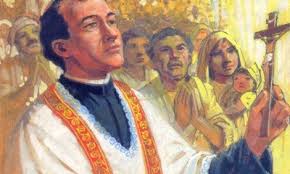
In Goa, the consecration has been traditionally looked at as something peculiar to St Joseph Vaz. The original “Deed” is not traceable, but Joseph Vaz’s first published biographer, the Oratorian priest Sebastião do Rego (1699-?), vouches that he read and kissed it several times, in the hope that he would be touched by a spark of the great fire with which it was written.[3] Did the Saint leave the manuscript behind with the Congregation, or with his family, in Goa? Might he have carried it with him to Sri Lanka? Hopefully, it will one day be found among the Oratorian documents.
What might have inspired Joseph Vaz to commit himself thus to our Divine Mother? Was it the influence of a teacher, from among the Jesuits, or more likely from among the Dominicans, who are known to have been great Marian devotees? Did Joseph find motivation in the books of spirituality that he came across in the rich seminary libraries? Further, why did he take the Feast of Our Lady of the Snows for a red-letter day in his life? Was it the fact that she is the patroness of Rome’s most important Marian church popularly called Santa Maria Maggiore?
While answers to those questions may remain conjectural, one thing is sure: what the Apostle of Sri Lanka has bequeathed to humankind is a precious document with a tenor both mystical and direct; it is “a unique deed inter vivos, in which Fr. Joseph Vaz is at once the donor and donation, notary and clerk; and the Blessed Virgin, donee and witness, while the Patriarch St Joseph, Spouse of the Donee and his namesake, his guardian angel and the other citizens of heaven are constituted intercessors before the Donee”.[4] Joseph Vaz is ready, Christ-like, to shed blood in atonement. And far from alienating the reader, the legalese underscores the solemnity of the act.
Montfortian Formula
Coming to Montfort’s act of consecration: it is the grand finale to his Treatise on the True Devotion to the Blessed Virgin.[5] His formula, thrice as long as Vaz’s, reads as follows:
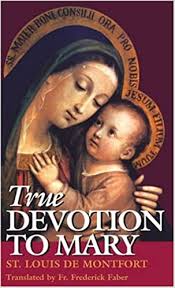
O Eternal and Incarnate Wisdom! O sweetest and most adorable Jesus! True God and true man, only Son of the Eternal Father, and of Mary, always virgin! I adore Thee profoundly in the bosom and splendours of Thy Father during eternity; and I adore Thee also in the virginal bosom of Mary, Thy most worthy Mother, in the time of Thine incarnation.
I give Thee thanks for that Thou hast annihilated Thyself, taking the form of a slave in order to rescue me from the cruel slavery of the devil. I praise and glorify Thee for that Thou hast been pleased to submit Thyself to Mary, Thy holy Mother, in all things, in order to make me Thy faithful slave through her. But, alas! Ungrateful and faithless as I have been, I have not kept the promises which I made so solemnly to Thee in my Baptism; I have not fulfilled my obligations; I do not deserve to be called Thy child, nor yet Thy slave; and as there is nothing in me which does not merit Thine anger and Thy repulse, I dare not come by myself before Thy most holy and august Majesty. It is on this account that I have recourse to the intercession of Thy most holy Mother, whom Thou hast given me for a mediatrix with Thee. It is through her that I hope to obtain of Thee contrition, the pardon of my sins, and the acquisition and preservation of wisdom.
Hail, then, O immaculate Mary, living tabernacle of the Divinity, where the Eternal Wisdom willed to be hidden and to be adored by angels and by men! Hail, O Queen of Heaven and earth, to whose empire everything is subject which is under God. Hail, O sure refuge of sinners, whose mercy fails no one. Hear the desires which I have of the Divine Wisdom; and for that end receive the vows and offerings which in my lowliness I present to thee.
I, N_____, a faithless sinner, renew and ratify today in thy hands the vows of my Baptism; I renounce forever Satan, his pomps and works; and I give myself entirely to Jesus Christ, the Incarnate Wisdom, to carry my cross after Him all the days of my life, and to be more faithful to Him than I have ever been before. In the presence of all the heavenly court I choose thee this day for my Mother and Mistress. I deliver and consecrate to thee, as thy slave, my body and soul, my goods, both interior and exterior, and even the value of all my good actions, past, present and future; leaving to thee the entire and full right of disposing of me, and all that belongs to me, without exception, according to thy good pleasure, for the greater glory of God in time and in eternity.
Receive, O benignant Virgin, this little offering of my slavery, in honour of, and in union with, that subjection which the Eternal Wisdom deigned to have to thy maternity; in homage to the power which both of you have over this poor sinner, and in thanksgiving for the privileges with which the Holy Trinity has favoured thee. I declare that I wish henceforth, as thy true slave, to seek thy honour and to obey thee in all things.
O admirable Mother, present me to thy dear Son as His eternal slave, so that as He has redeemed me by thee, by thee He may receive me! O Mother of mercy, grant me the grace to obtain the true Wisdom of God; and for that end receive me among those whom thou lovest and teachest, whom thou leadest, nourishest and protectest as thy children and thy slaves.
O faithful Virgin, make me in all things so perfect a disciple, imitator and slave of the Incarnate Wisdom, Jesus Christ thy Son, that I may attain, by thine intercession and by thine example, to the fullness of His age on earth and of His glory in Heaven. Amen.
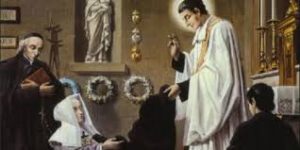
Montfort’s formula begins with an invocation of the Incarnate God. The Christological opening is quickly followed by Marian veneration, in acknowledgment of the Incarnation. Our Lord’s death on the Cross is an act of incomparable nobility, yearning as He did to rescue humanity through His sacrifice; our inspired author stresses that He emptied himself, taking the form of a slave (Phil. 2:7). A self-imposed slavery like this can only be termed a slavery of love.
Montfort points to a divine enslavement that is liberating, as opposed to human liberty that can be enslaving. And what can be better than following Jesus’ example of submitting Himself to His holy Mother? At the heart of the Montfortian formula is the recognition of human unworthiness to stand in the presence of our Lord and God, other than through His Mother’s intercession. The point of resolution comes with the renewal of the baptismal vows; an express renunciation of Satan; and decision to follow Jesus and be faithful to Him.
Appraisal
The two consecration formulas are essentially the same: note the similarity of the terms employed. In addition, Vaz sells himself as a slave while offering himself as a “gift in perpetuity”; he humbly calls upon the angels, men and creatures, to mediate, for is it not perfectly justified to take one’s Guardian Angel into confidence; to appeal to the saint of one’s name; and, as per the communion of saints, invoke their intercession before her.
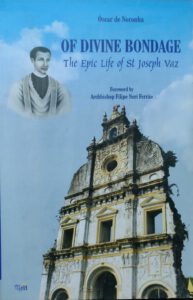
Vaz’s act is crisp and intimate; Montfort’s, uninhibited and elaborate. St Joseph Vaz’s singular self-offering happened when he was 26 years of age; it is not known when St Louis de Montfort made his, but he included a very brief formula of consecration at the end of his Love of Eternal Wisdom (c. 1703), when he was 30. Vaz embraced the spirituality of St Philip Neri eight years after his consecration; Montfort became a Dominican tertiary in 1710, three years before his Treatise.
Finally, Fr. Joseph Vaz is not known to have ever spoken publicly about his “Deed”, so it may be regarded as a very personal statement. It was for sure a product of his deep conviction; none before him are known to have embraced the slavery of love in Goa,[6] and none from among his confreres are known to have followed his example. On the other hand, not only is Montfort’s Treatise highly elucidative, his consecration formula is an expansive public declaration of what every Catholic ought to strive for; it is a standing invitation to build a profound and intimate union with Christ through Mary.
(Excerpted from my article titled “Two Saints and a Consecration for our Times”, in St Joseph Vaz for All Times, edited by Fr. Aleixo Menezes and published by the Archdiocese of Goa and Daman, 2015, and posted here with minor alterations)
[1] This is sometimes referred to as a “Letter”, in a literal translation of the Portuguese “Carta do Cativeiro”. Whereas “Cativeiro” could be variably translated as captivity, bondage, or slavery; “Carta” would be better translated as “Deed”, and not simply as “Letter”, particularly considering the legal language in which it is couched.
[2] Translated by this author. Cf. Óscar DE NORONHA, Of Divine Bondage: The Epic Life of St Joseph Vaz, (Third Millennium: Panjim, 2014), 25
[3] Sebastião DO REGO, Vida do Venerável Padre José Vaz (Imprensa Nacional: Goa, 19623), 172.
[4] Seráfico MISQUITA, Ven. Padre José Vaz, Apóstolo de Ceilão (Tipografia Rangel: Goa, 1969), 30.
[5] St Louis DE MONTFORT, True Devotion to Mary. Transl. Frederick William Faber. Revised edition. (Montfort Publications: New York, 1967), 227-229.
[6] St Louis de Montfort himself has said that although the true devotion is an easy way, few saints have entered upon it. Cf. James Patrick GAFFNEY, ed., Jesus Living in Mary, op. cit., 231.
Mary, our Star and Haven
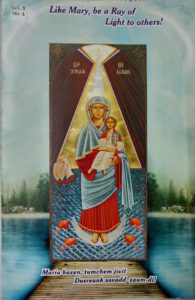
Christ is at the centre of our Faith; His glorious Resurrection is its bedrock. But none of this would be possible if not for Mary! It was through her that our Father in Heaven sent us His Only Son; it was through her that He worked out the history of our salvation. On her part, by willingly cooperating in God’s plan for estranged humankind, Mary was privileged to receive, in the words of Pope John Paul II, the “deepest knowledge of the mystery of God’s mercy.”
Mary is thus less ‘off-centre’ than some of us may imagine. If Christ is the Sun, she is the Moon; she is a reflection of His radiance, in whose light we journey or sail through time. She is a sure guide for our steps. She prays for us sinners, now and at the hour of our death. She leads us to the Father and the Son in Heaven. For this she is naturally deserving of all our love and attention.
The Church proclaims – and we can see – Mary’s living and active presence in our day-to-day existence. She touches our lives; she who had a personal experience of the ups and downs in our valley of tears watches over us, like a true mother keen about her children’s welfare. She is our mother of mercy, our sweetness and our hope. She is our mother most faithful, who never leaves us unaided when we fly to her patronage or implore her help. She is our mother, holy, tender and kind, a shining model of faith, hope and charity.
Catholic Tradition invokes our Blessed Mother in myriad ways. Devotion to her is “intrinsic to Christian worship”, says Pope Paul VI; and it is expressed through liturgical feasts dedicated to her and through Marian prayer, such as the Rosary. To our local faith community she is the Star of the Sea – not only because we are in physical proximity of deep and unknown waters, and our people are a seafaring lot; but also because, on a universal plane, the sea is a symbol of life’s many perils through which we all need to be piloted to a safe haven.
When we sing and pray, “Be with us, Mary, along the way…” we can trust Our Lady, Queen of Heaven and Earth, to be to us that guiding star and safe haven all at once!
(Editorial, The Stella Maris Bulletin, Vol. 3, No. 1, Dec 2009)
The Fragrance of Carmel (3/3)
Significance of the Carmelite Way
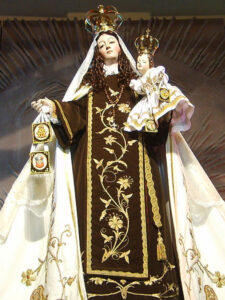 There are many Carmelite Orders, both male and female, in the Catholic Church of the Roman and Eastern Rites. The original Carmelites were an Order founded on Mount Carmel, by Berthold, a Crusader from Calabria, about the year 1155 A.D. They constitute the Order of the Brothers of Our Lady of Mount Carmel (Ordo Fratrum Beatissimæ Virginis Mariæ de Monte Carmelo, abbreviated O. Carm.) who were constrained to leave the area and settle in Europe.
There are many Carmelite Orders, both male and female, in the Catholic Church of the Roman and Eastern Rites. The original Carmelites were an Order founded on Mount Carmel, by Berthold, a Crusader from Calabria, about the year 1155 A.D. They constitute the Order of the Brothers of Our Lady of Mount Carmel (Ordo Fratrum Beatissimæ Virginis Mariæ de Monte Carmelo, abbreviated O. Carm.) who were constrained to leave the area and settle in Europe.
Thereafter, the Order underwent many reform movements, the most important one being the one initiated by Teresa of Ávila and John of the Cross. They founded the Order of Discalced Carmelites (O.C.D.), also called Barefooted Carmelites, to differentiate them from their predecessors who were ‘Calced’. There is also an Order of Cloistered Carmel nuns.
Interestingly, the Stella Maris Monastery presently on Mount Carmel in Haifa, Israel, is considered the spiritual headquarters of the Carmelite Order.
The Carmelite charism is an important jewel in the Catholic crown. Here are some reasons why:
SPIRITUALITY: Centuries of Carmelite history show that longing and living for God is the essence of their spirituality. It is clear from the numerous exemplary lives of their confreres that it is indeed possible to encounter God very intimately. This is an experience attained through simplicity, detachment, contemplation, prayer and work, all of which produces an apostolic spirit, in many ways similar to the life led by Our Lady.
MODELS: The Carmelite Order has given several saints to the Catholic Church, among them mystic authors like Teresa of Ávila (1515-82) and John of the Cross (1542-91), who shine out as Doctors of the Church. Centuries later, Thérèse of Lisieux (1873-97, also known as Teresa of the Child Jesus and the Holy Face, whose highly influential model of sanctity marked by a simple and practical approach to the spiritual life also won her the title of Doctor of the Church.
Elsewhere in the world, the richness of the Carmelite spirituality was evidenced by Kuriakose Elias Chavara (1805-71), a Syro-Malabar priest of the Carmelites of Mary Immaculate (C.M.I), from Kerala, and by Edith Stein (1891-1942), a German Jewish philosopher who converted to Christianity and became a Discalced Carmelite nun.
LITERATURE: Several Carmelites have endowed us with the fruits of their study and contemplation, the chief among them being St Teresa of Ávila and St John of the Cross. To the former belong many poetical works and spiritual classics like The Way of Perfection and The Interior Castle, besides her engrossing autobiography.
St John has to his credit poetic works like Spiritual Canticle and Dark Night of the Soul, and prose works like The Ascent of Mount Carmel, among others.
Thérèse of Lisieux’s autobiography, The Story of a Soul, was published posthumously.
In the monastery where she lived, Edith Stein was assigned the task of completing her autobiography, Life in a Jewish Family. She also wrote Finite and Eternal Being – An Ascent to the Meaning of Being and Science of the Cross, commenting on St John of the Cross and the Carmelite understanding of the depths of the soul.
MESSAGE TO THE WORLD: At the Apparitions in Fátima, whose full import the world is yet to understand, Our Lady of Mount Carmel appeared to Sister Lúcia holding the Brown Scapular. The famous visionary, who later became a Carmelite nun, stated that our Divine Mother wished everyone would wear it as a sign of their ‘consecration to her Immaculate Heart.’ For sure, the sacramental is a quiet and comforting reminder that Our Lady is always there for us.
There is therefore no doubt that we are in the presence of a prophetic Religious Order: The Carmelites!
The Fragrance of Carmel (2/3)
The Call of Mount Carmel
The Carmelite Order traces its origins to hermits who lived on Mount Carmel in Palestine, near the traditional site associated with the prophet Elijah, in the 12th century. These hermits, inspired by the example of Elijah and Elisha and their devotion to prayer and contemplation, later formed the Carmelite Order. On Mount Carmel they erected a sanctuary to the Virgin Mary, at the same place where Elijah had seen the Cloud. They called themselves Brothers of the Blessed Mary of the Mount Carmel. They regarded Elijah as their spiritual founder.
Soon, many pilgrims began to join the Order, among them St Cyril (c. 1126 - c. 1235), St Angelo (1185-1220) and St Simon Stock (c. 1165-1265). St Cyril, often referred to as Cyril of Constantinople, was a priest and a legendary figure in the Carmelite order. St. Angelo, also known as Angelus of Jerusalem, was a convert from Judaism who became a Carmelite priest and was martyred.
In the twelfth century there were many misunderstandings against the Hermits of Mount Carmel, particularly when they transitioned from their eremitical life on Mount Carmel to Europe. These challenges stemmed from adapting to new settlements, being present alongside other mendicant orders, and a lack of understanding about their specific way of life.
St Simon Stock
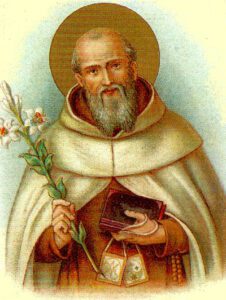 Meanwhile,, Simon Stock, an English Carmelite, suffered a lot in view of the opposition that his Order suffered in his country. On the night of 16 July 1251, at the height of his suffering, St Simon was praying hard to Our Lady; his fervent prayer was transformed into a marvellous hymn:
Meanwhile,, Simon Stock, an English Carmelite, suffered a lot in view of the opposition that his Order suffered in his country. On the night of 16 July 1251, at the height of his suffering, St Simon was praying hard to Our Lady; his fervent prayer was transformed into a marvellous hymn:
Flower of Carmel,
Tall vine blossom laden;
Splendour of heaven,
Childbearing yet maiden.
None equals thee.
Mother so tender,
Who no man didst know,
On Carmel's children
Thy favours bestow.
Star of the Sea.
Strong stem of Jesse,
Who bore one bright flower,
Be ever near us
And guard us each hour,
who serve thee here.
Purest of lilies,
That flowers among thorns,
Bring help to the true heart
That in weakness turns
and trusts in thee.
Strongest of armour,
We trust in thy might:
Under thy mantle,
Hard press'd in the fight,
we call to thee.
Our way uncertain,
Surrounded by foes,
Unfailing counsel
You give to those
who turn to thee.
O gentle Mother
Who in Carmel reigns,
Share with your servants
That gladness you gained
and now enjoy.
Hail, Gate of Heaven,
With glory now crowned,
Bring us to safety
Where thy Son is found,
true joy to see.
Amen. (Alleluia)
The Saint prayed and sang all night. At the first sign of dawn, Our Lady appeared to him, surrounded by the angels, dressed in the habit of the Carmel. She smiled and brought in her virginal hands the Scapular of the Order, with which she clothed the man of God, saying: ‘This is a privilege for you and all the Carmelites. Whoever dies wearing this scapular shall not fall into hell.’
Of course, we cannot be carried away by the false idea that the mere wearing of a scapular is sufficient to win us Heaven. A scapular is not an amulet but a sacramental, a reminder of Our Lady's protection and intercession. So, we must have devotion to her and live a Christian life fulfilling the Commandments!
Saturday Privilege
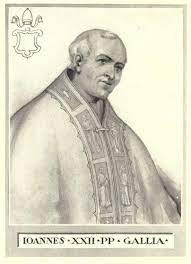 In 1316, it is said that the Virgin appeared to a cardinal who, on the second day of the vision, was elected Pope bearing the name John XXII, who reigned up to 1334. She spoke to him of a Sabbatine or ‘privilege John XXII’, which was approved and confirmed by Pope Clement VII ("Ex clementi", 12/8/1530), Pope St Pius V ("Superna dispositione", 18/2/1566), Pope Gregory XIII ("Ut laudes", 18/9/1577), and others, and also by the Holy Roman General Inquisition under Pope Paul V (20/1/1613).
In 1316, it is said that the Virgin appeared to a cardinal who, on the second day of the vision, was elected Pope bearing the name John XXII, who reigned up to 1334. She spoke to him of a Sabbatine or ‘privilege John XXII’, which was approved and confirmed by Pope Clement VII ("Ex clementi", 12/8/1530), Pope St Pius V ("Superna dispositione", 18/2/1566), Pope Gregory XIII ("Ut laudes", 18/9/1577), and others, and also by the Holy Roman General Inquisition under Pope Paul V (20/1/1613).
Accordingly, ‘it is permitted to the Carmelite Fathers to preach that the Christian people may piously believe in the help which the souls of brothers and members, who have departed this life in charity, have worn in life the scapular, have ever observed chastity [according to one’s state], have recited the Little Hours [of the Blessed Virgin], or, if they cannot read, have observed the fast days of the Church, and have abstained from flesh meat on Wednesdays and Saturdays (except when Christmas falls on such days), may derive after death — especially on Saturdays, the day consecrated by the Church to the Blessed Virgin — through the unceasing intercession of Mary, her pious petitions, her merits, and her special protection.’ (Cf. summary approved by the Congregation of Indulgences on 4 July 1908).
(Talk delivered at Regina Angelorum Cultural Centre, Panjim)
To be concluded: 3 - Significance of the devotion for our day and age
The Fragrance of Carmel (1/3)
Carmel is a mount that figures in the Old Testament. Devotion to Our Lady began there, indirectly, with Prophet Elijah (also called Elias); it culminated in the formation of the Religious Order of the Carmelites in the thirteenth century. It is a fragrance we still enjoy!
In 1 Kings 19: 16B, 19-21, we meet Elijah, a prophet who lived in Israel nine centuries before Christ. He proclaimed Yahweh, the one true God of the Israelites, against Baal, a false god of the Canaanites. God worked miracles through Elijah as a sign that he was His favoured one. Because of the sins committed in Israel, the Prophet appeared before the evil king Acab and announced a terrible chastisement. There followed a drought throughout the kingdom.
First resurrection
Elijah withdrew to Sarepta and was helped by a poor and honest widow. She had only flour and oil for herself and her son to consume, after which they expected to die. But she counted the Prophet in and the reward was that flour and oil miraculously increased in the containers. This is a lesson in heroic faith and confidence that we must have in God.
But then, the son died and, all agonised, the woman said to the Prophet: ‘What did I do, oh man of God? Did you come to my house to remind me of my sins and kill my son?’ Elijah called out to God and the Lord heard his prayer. Soon, ‘the little boy’s soul returned to him and he won back his life.’ This was the first miracle of resurrection we see in the Old Testament.
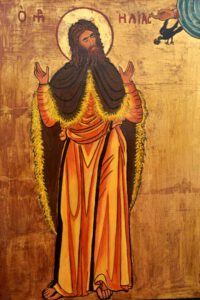 Combative spirit
Combative spirit
After three years in which the kingdom was without dew or rain, Elijah was before the king again. The king asked him: ‘Are you the troublemaker in Israel?’ In a typical example of holy daring or courage, Elijah answered: ‘It is not I who disturbed Israel but you and the house of your father, by abandoning the Lord’s commandments and following Baal.’ Then, turning to the people, he said: ‘When are you going to stop making the mistake of turning to the Lord and to the idol of Baal all at once?’ If the Lord is God, follow him; if Baal is it, follow him.’ (Cf. 1 Kings 18)
Elijah challenged the prophets of Baal to work a miracle. They failed. The people were dumbstruck. Elijah then worked a prodigious miracle on Mount Carmel, bringing fire from heaven for the holocaust, and wood and stones to erect the altar. And the 450 false prophets of Baal, the main responsible for the people’s sins, ‘and Elijah brought them down to the brook Kishon and killed them there’ (1 Kings: 18: 40). This is an example of combativeness for God, a trait lacking in modern man.
Prefiguring the Immaculate Conception
After this healthy and admirable eradication, Elijah began to pray on the Mount. After he implored God to stop the terrible drought, a little cloud began rising from the sea, which soon caused a great shower to fall (1 Kings: 18: 44). This little cloud is interpreted as the symbol of Our Lady and Her Immaculate Conception – because, just as the light and winged cloud rose from the salty sea, without a trace of its bitterness, the Virgin Mary emerged faultless and immaculate from the sea of fallen humanity. Elijah understood this symbolism and was the first to venerate Our Lady.
Elijah’s was snatched from this earth by a chariot of fire. Before that he threw his mantle upon Elisha, who then lived on Mount Carmel. Centuries later, Elijah appeared at the Transfiguration of Our Lord on Mount Tabor and it is believed that he (together with Enoch) will return at the end of the world, to combat the Anti-Christ.
(Talk at Regina Angelorum Cultural Centre, Panjim)
(To be continued: 2 – St Simon Stock and the Carmelites. 3 – Significance for our day and age)
A Paean to the Woman
The lines that follow form an insufficient paean to the Woman.[1] Yet, in this month of Mary, a few reflections may not be out of place.
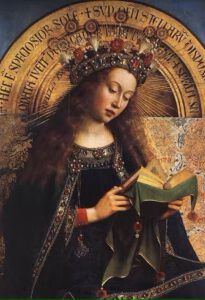
The role of the woman in the affairs of human destiny is invaluable. It is as wife and mother that she reveals the larger part of her noble self. Guide, inspirer, defender and lover of everyone in the family. she herself eventually becomes the best loved one.
She is the muse for her husband, and he sings of her glory. Feel the flow of his poetic vein as in Proverbs 31:10-31 –
A good wife who can find?
She is far more precious than jewels.
The heart of her husband trusts in her,
and he will have no lack of gain.
………………………………………………………..
Strength and dignity are her clothing,
and she laughs at the time to come.
She opens her mouth with wisdom,
and the teaching of kindness is on her tongue.
She looks well to the ways of her household,
and does not eat the bread of idleness.
Her children rise up and call her blessed;
her husband also, and he praises her:
"Many women have done excellently,
but you surpass them all."
Motherhood is a vocation which began to be better understood and appreciated in the glorious light of the Angelic Salutation to Mary, when she was called to be the Mother of God! The event has been a watershed in the history of humankind, with a Woman playing a definitive role in God’s Plan.
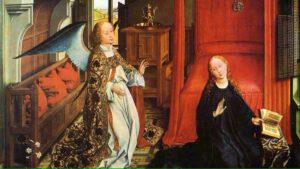
It can well be said that, with Mary, “God brought the dignity of woman to unsuspected heights. Mary is the guarantee of feminine greatness; she reveals the specific form of being woman, with her vocation to be spirit, to surrender, which spiritualises the flesh and incarnates the spirit.”[2]
With Mary, human life became a transfiguration. And what better example of this than the Holy Family of Nazareth? Nazareth became a splendid illustration of the Catholic spirit and lifestyle. The institution of the family began to grow and blossom ever since.
Now, if any family is found wanting or breaking, it could well be that the mother is either physically or spiritually absent. Modern-day circumstances sometimes make her physical absence a necessary evil. So, it might happen that when the mothers are away some serpents could be at play...
On this day, we hail the Goan wife and mother who has always been the pride of our people. Whatever her educational status, it is often she who teaches her learned husband the matrimonial equation 1+1=1. And when herself in a state of grace, she is able to nurture the household with grace!
Woman of today, let Mary be thy model, so as to ensure that our families become at least pale imitations of Nazareth. “A woman who fears the Lord is to be praised.”
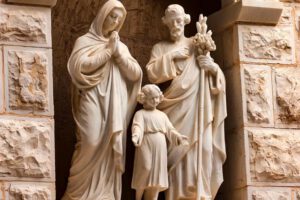
O Woman of today, let thy name be Maria ! Or, as that hymn[3] in Portuguese says –
Tudo seria bem melhor Everything would be better
Se o Natal não fosse um dia If Christmas wasn't just a day
E se as mães fossem Maria And if mothers were Maria
E se os pais fossem José And if the fathers were Joseph
E se a gente parecesse And if we looked
Com Jesus de Nazaré Like Jesus of Nazareth.
-o-o-o-o-
[1] First published as editorial titled ‘Let thy name be Maria’, in Yuvayana, a youth magazine of the Diocesan Youth Centre, Archdiocese of Goa and Daman, May 1991. Reprinted here with the addition of the last paragraph.
[2] "Apostleship of Prayer", in Don Bosco’s Madonna, May 91, p. 7
[3] “Estou pensando em Deus”, by Padre Zezinho, stage name of Fr. José Fernandes de Oliveira (1941-), a Brazilian priest of the Congregation of the Sacred Heart of Jesus, singer and songwriter.

